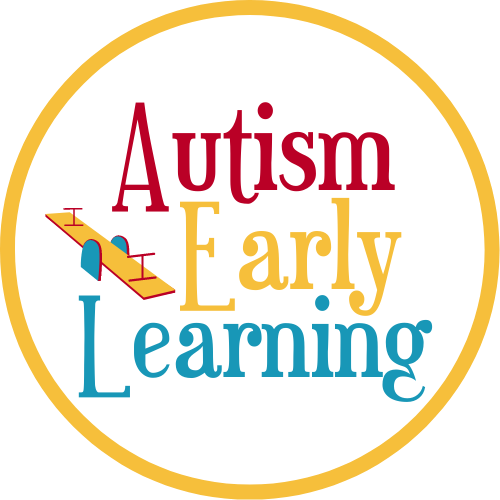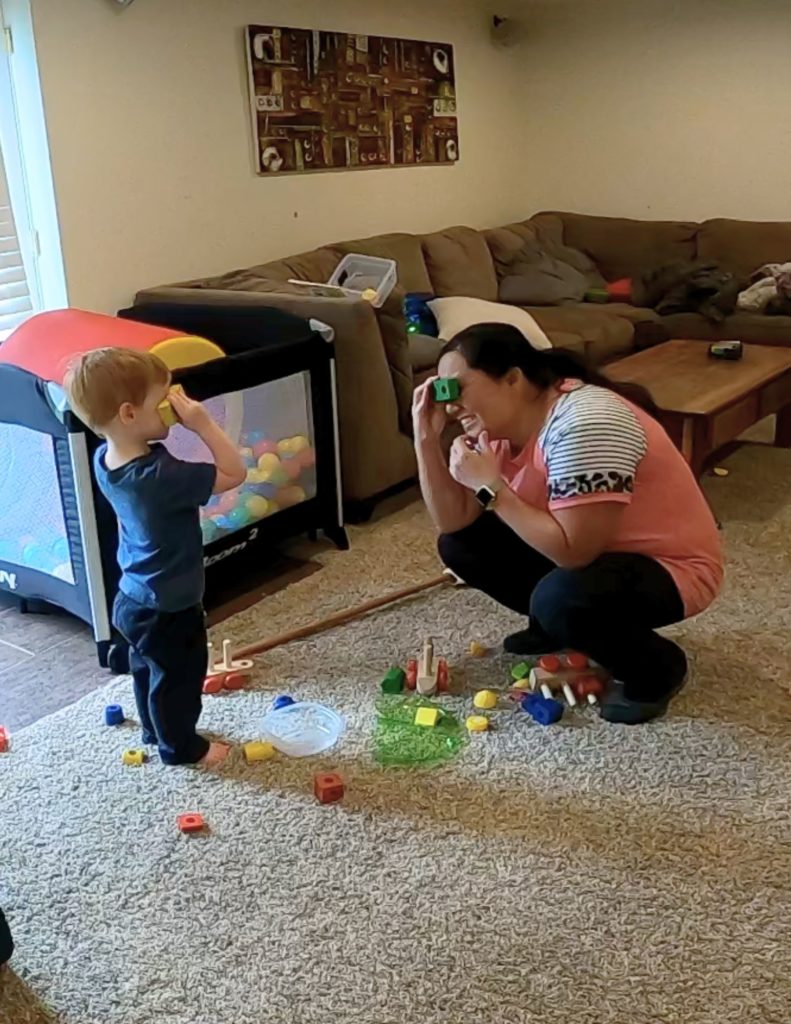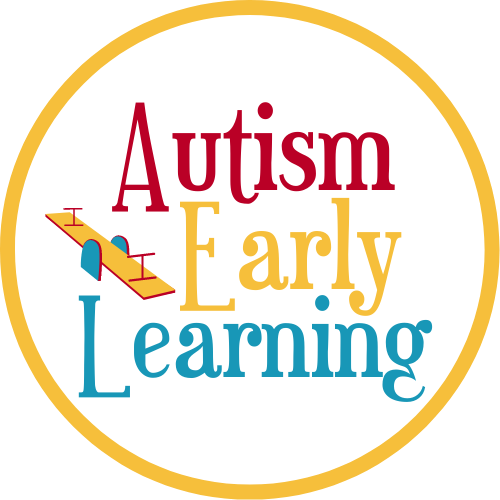I know I say this about a lot of activities, but swinging in a blanket is one of my favorites for a child with autism that is working on communication, particularly initiating (opening circles).
Here are just a few reasons why I love this activity:
- It’s fun
- It’s engaging
- It’s motivating
- It involves several sensory systems at once
- There’s so many things you can do to the activity to change it up and keep it going
- Most people own a blanket, so you don’t need to go out and get supplies
- You can use this activity for all stages of play
Today I’m going to talk mostly about working with kids who are working on increasing the number of consecutive circles they have during each interaction.
As a disclaimer, remember that every child is different, and some kids don’t like the movement of being in a blanket swing. If this is the case, read your child’s cues and find a different activity.
In the PLAY Project we like to follow the child’s lead, but there are occasions when the child is not going to come up with an idea like swinging in a blanket unless they’ve done it before. So, obviously you may need to introduce this activity to your child.
Start by creating a routine and having fun, and once your child is engaged, you can start changing things up. Your routine could be as simple as this:
- Lay the blanket on the floor
- Have your child lay on the blanket
- Pick the blanket up
- Say something like “1,2,3, GO!”
- Swing
- Stop
Do this several times until you know your child wants more. Then start having long pauses. Wait expectantly for your child to initiate (open a circle) that she wants more. Remember, gestures are communication. We’re going for engagement and circles. I wouldn’t recommend saying things like “say more, say more.” You can model it and give her actions words, but don’t force her to say it.
So, if your child just looks at you and smiles, you can take that as communication and say “swing!” and then start swinging.
When your child is completely engaged and wants more and more, take advantage of this time and create opportunities for your child to communicate those wants.
Change things up a little, get creative. You could fall asleep so your child has to initiate things like
- waking you up
- putting the blanket in your hand
- initiating for you to lift the blanket up
- initiating for you to swing her
Know what your child’s limits are, you don’t want to make it so hard she gives up, but you also don’t want to do too much that you’re not giving those opportunities of communication.
Supplies
- Blanket
- Pillow or couch cushion
Instructions
- This activity requires two adults
- Lay some pillows, a couch cushion, or a pad on the ground where you are swinging
- Have your child lay in the blanket
- Hold the corners of the blanket, and swing your child
Extra Tips & Ideas
- Please read your child's cues. This activity can help some kids get regulated, but it can also be dysregulating for other kids. Also, too much of any kind of movement can also be dysregulating, so it's important to allow your child to stop when he is ready to stop.
- Add rhythm and music while you swing. This can be down with songs, counting, or even ready, set, go routines




